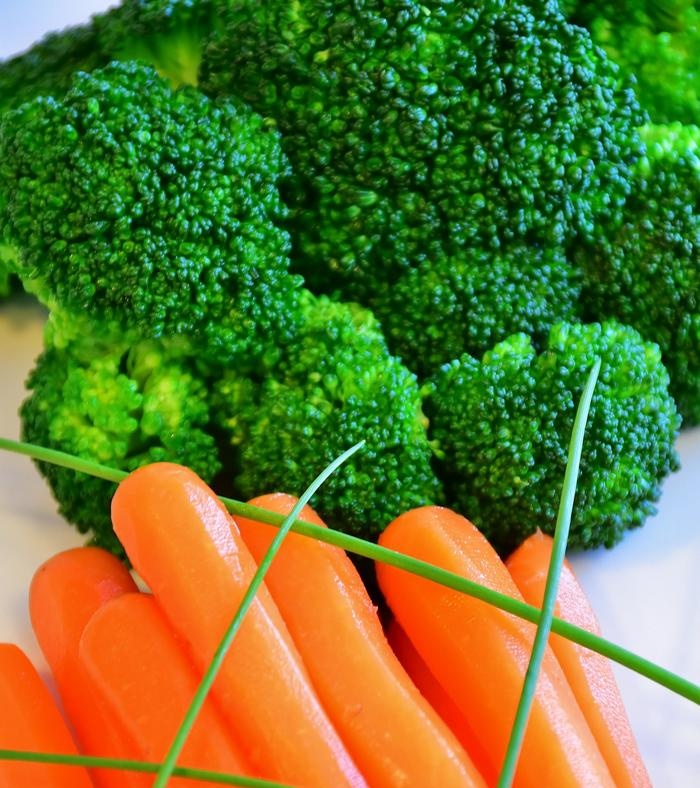Green and yellow vegetables |
|
However, one does not have to go that far for an example; it can be found in our country. The inhabitants of mountainous Dagestan, which is famous for its long-livers, constantly eat a variety of cultural and wild-growing green plants - fresh in summer and dried in winter. If you calculate the diet of a Dagestan centenarian, it turns out that he uses 500 g of such plants per day. Isn't this one of the secrets of the fact that 86 out of a thousand people here reach a century? The role of vegetables in preventing excess weight is indispensable, which is associated with a firmly rooted tendency in our country to excessive consumption of high-calorie foods in conditions of gradually decreasing physical activity, which negatively affects metabolism, sharply worsens health, the body's resistance to diseases that reduce human performance. The inclusion of vegetables in the diet makes it more harmonious, improves digestion, digestibility of food and eliminates overeating. Moreover, many types of vegetable plants are so unique in chemical composition and beneficial effects that they have on the human body that the exclusion of even one of them from the diet “closes up a whole storehouse” of vitamin and medicinal reserves, vital for good nutrition.
So, on average, an adult needs to receive from 2500 to 4000 kcal per day with food, depending on energy costs, which are determined in turn by the degree of activity of his lifestyle and the nature of work. The calorific value of 1 kg of fresh green peas, sweet corn and potatoes is only 750-940 kcal; watermelon, melon, cabbage, onion, root vegetables (except radish) - 300-500 kcal; cucumber, tomato, pepper, eggplant, spinach, lettuce and pumpkin - 150-270 kcal; thermal energy 1 kg beef and of bread is 2000 kcal, and fat - 8800 kcal. On average, it is believed that a kilogram of vegetables contains 837-209 kJ, while the energy potential of a similar amount of meat and fat is 8400 and 36 960 kJ, respectively.
Vitamins are a group of biologically active organic compounds contained in very small doses and necessary for the normal functioning of the body. Unlike basic nutrients (proteins, fats, carbohydrates, mineral salts), vitamins are not energy sources and plastic materials. They are necessary as essential components of metabolism. Vegetables are the main source of vitamins.In the human body, vitamins are catalysts for biochemical reactions and regulators of basic physiological processes, metabolism, growth, reproduction. Due to vitamins, vegetables also contribute to a more rational use of protein in the process of human nutrition. In this regard, in recent years in many countries of the world, vegetables have become increasingly important. Particular attention is paid to the production and consumption of a whole group of vegetables, united under the general conditional name green-yellow (or yellow-green) vegetables, which it received from the characteristic color of the productive organs (leaves, fruits, root crops, etc.). For what reason has this group of vegetable plants attracted close attention, and not only vegetable growers, but also doctors? For example, in Japan, the consumption of green-yellow vegetables is controlled not only by the Ministry of Agriculture, but also by the Ministry of Health. This is primarily due to the fact that in the highly developed countries of the world these vegetables are becoming increasingly important in connection with a new approach to the problem of public health, the main goal of which is not treatment, but prevention of diseases, and increasing the resistance of the human body's immune system. Therefore, numerous scientific studies were carried out, the results of which clearly proved the outstanding role of the green-yellow group in the prevention of various diseases, and with a much higher level of effectiveness than expected, and which can be achieved using medicines synthesized by the chemical industry, and even then when the latter are powerless.
A whole series of research works have shown that vitamin A deficiency leads to reduced resistance against infectious diseases. In connection with A-avitaminosis, many doctors also put the formation of stones in the urinary and gall bladders, catarrh and infections of the digestive tract, lungs and a number of diseases. It just so happened, unfortunately, and this is one of the troubles of mankind, that the characteristic properties of any vitamin and its role in the body are still judged, mainly on the basis of those visible disorders that are caused by the absence or lack of this vitamin in food. Moreover, with a lack of vitamin A in food, there are no such vivid symptoms of the disease as in the absence of vitamin C (scurvy), D (rickets), B1 (beriberi). Its deficiency gradually affects the general state of the protective functions of the human body, and with a chronic shortage it leads to much more negative consequences. And vice versa, its regular intake into the human body in "fresh form" maximally mobilizes the immune system of the human body, which becomes immune even to very serious diseases, against which modern medicine is still ineffective. What vegetables belong to the green-yellow group? The main criterion for including vegetables in this group is the level of beta-carotene content of the order of 600 micrograms (0.6 mg%) per 100 g of raw material. However, there are exceptions. So, for tomato and vegetable peppers, consumed in significant amounts, this kind of "height bar" is lowered to 300-400 micrograms (0.3-0.4 mg%) per 100 g of raw material.
Vegetables of the green-yellow group, the recommended amount of which in daily consumption should be at least 100 g, as the most valuable sources of beta-carotene should find their permanent place in our garden and kitchen table. The key to this is our active longevity. Bunin M.S. Similar publications |
| The healing origins of plants | Drinking Japanese Matcha Tea Reduces Anxiety |
|---|
New recipes
 Even the legendary Hippocrates considered many plants not only as a source of nutrition, but also as a natural medicine, measured by nature itself in doses necessary for the body. This is confirmed by life itself. It is known that many peoples of the countries of Asia, Africa, America, in whose food numerous types of vegetable plants are more widely used, do not know obesity,
Even the legendary Hippocrates considered many plants not only as a source of nutrition, but also as a natural medicine, measured by nature itself in doses necessary for the body. This is confirmed by life itself. It is known that many peoples of the countries of Asia, Africa, America, in whose food numerous types of vegetable plants are more widely used, do not know obesity,  It is the content of vitamins, hormones and enzymes or, as they are often called, biocatalysts, as well as mineral and spicy substances, that determines the main value of vegetables as food products, since in terms of calorie content they are inferior to many other products of plant and animal origin.
It is the content of vitamins, hormones and enzymes or, as they are often called, biocatalysts, as well as mineral and spicy substances, that determines the main value of vegetables as food products, since in terms of calorie content they are inferior to many other products of plant and animal origin. However, in the collection of kilocalories from a unit area, vegetable crops are not inferior to cereals. For example, wheat gives an average of 1 sq. m 870, and a tomato 1254 kcal. But it turned out that this is not the most important thing, since in the final analysis it is not so much the yield in terms of caloric content that is important, as the yield of vitamins from 1 m2 of vegetable crops.
However, in the collection of kilocalories from a unit area, vegetable crops are not inferior to cereals. For example, wheat gives an average of 1 sq. m 870, and a tomato 1254 kcal. But it turned out that this is not the most important thing, since in the final analysis it is not so much the yield in terms of caloric content that is important, as the yield of vitamins from 1 m2 of vegetable crops. What is the reason for the effect of green-yellow vegetables on the immune system of the human body? First of all, with a high content of "raw" or "fresh" provitamin A - beta-carotene. As it turned out, the functions of vitamin A are much broader than it was originally assumed and about which are known to wide circles of the population: a beneficial effect on the growth processes of the body, human vision, the physical condition of the skin, hair, etc.
What is the reason for the effect of green-yellow vegetables on the immune system of the human body? First of all, with a high content of "raw" or "fresh" provitamin A - beta-carotene. As it turned out, the functions of vitamin A are much broader than it was originally assumed and about which are known to wide circles of the population: a beneficial effect on the growth processes of the body, human vision, the physical condition of the skin, hair, etc. A well-known leader among green-yellow vegetables is orange carrots (carotene), which contains an average of 4.0-7.0 mg% per 100 g of beta-carotene in relation to raw material, and in some special carrots the carotene content reaches 20 -37 mg%. There is a lot of beta-carotene in some pumpkin varieties, but, as it turned out, the most valuable sources of provitamin A are many leafy, green and gingerbread vegetables, as well as some non-traditional plants for nutrition, such as the ornamental crops of perilla and
A well-known leader among green-yellow vegetables is orange carrots (carotene), which contains an average of 4.0-7.0 mg% per 100 g of beta-carotene in relation to raw material, and in some special carrots the carotene content reaches 20 -37 mg%. There is a lot of beta-carotene in some pumpkin varieties, but, as it turned out, the most valuable sources of provitamin A are many leafy, green and gingerbread vegetables, as well as some non-traditional plants for nutrition, such as the ornamental crops of perilla and 








